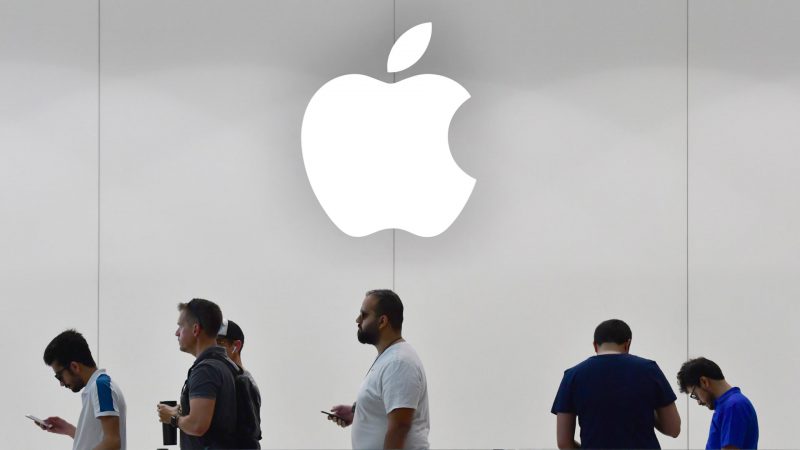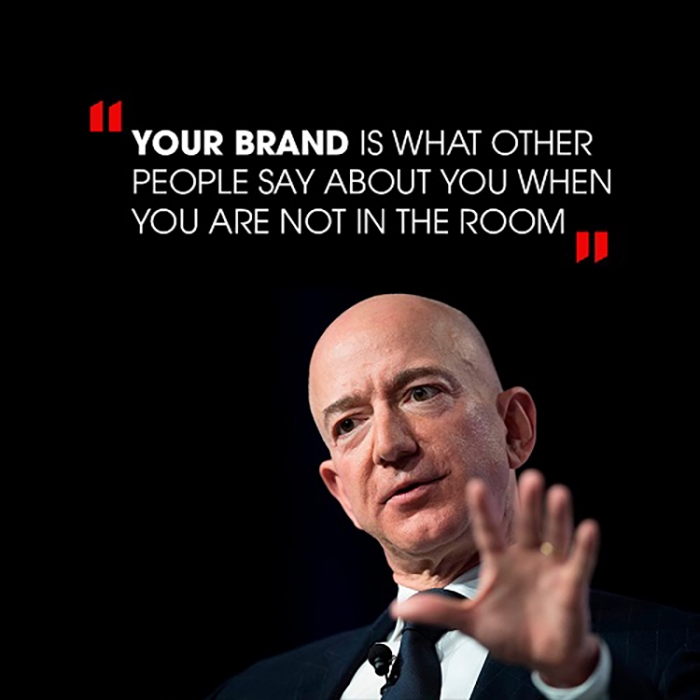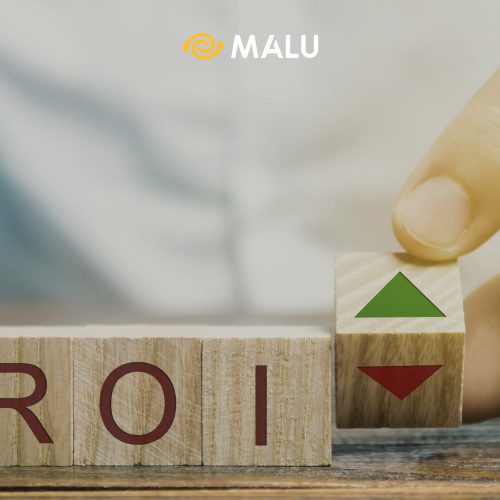
From newspapers: “Apple is the most valuable brand in the world in 2022”; “Google leads the list of inspirational brands”, … until the hotly discussed topics: “Vietnamese brands”, … it seems that it is not too difficult to come across the phrase “brand”.
So after all, “what is a brand?” – this seemingly simple question is clearly the heart of a whole process of construction and management later.
We often hear a lot of people in the business or marketing field using the term “Brand”, but it is a fact that not all “industry people” understand this term exactly.
In the next section, this concept will be clarified through each question:
Some related articles:
- Brand Health – How to measure brand health effectively
- Brand Research – 6 steps to target breakthrough market research
- What is Employer Branding? Employer brand development
- 5 Tips for Product Design, Impressive Packaging for Brands
- Brand Extension: What is Brand Extension Strategy?
- What is Brand Culture? 6 Steps to Building Brand Culture
What is Brand? Definition of a brand
Brand is the sum total of all recognizable signs, feelings and impressions in the mind about a certain product, company or individual. More than just a name or a logo, a brand is the associations of values and images that these elements evoke.
Let’s think together and try to analyze any brand you know. Here, because we like Apple very much, we will take the brand of this leading technology corporation as an example.
What is the Apple brand?
If the answer to the above question is: computers, phones, and other amazing tech gadgets that we can’t live without, then maybe you should re-read the concept. Those are just products made by Apple only.
And it’s not the glossy TV commercials or the dramatic staged presentations or the opulent fronts. The above factors are only in the field of marketing and advertising. But not yet, even the name Apple or the logo cannot cover our concept when talking about the Apple Brand.

The Apple brand is not a thing, no one can hold it or hear it or even touch it. That’s because the brand lives in the mind, the brand is everything we feel about Apple (high quality, expensive, continuous improvement, …). Thoughts live in the minds of everyone who experiences them: employees, investors, the media, and perhaps most importantly, customers.
Simply put, brand is perception.

Amazon CEO Jeff Bezos also gave a definition of a brand:
Your brand will be what people talk about when you’re not there.
>> Brand Awareness – A guide to brand identity
What is the business value of a brand?
Branding becomes a business tool used to drive ROI (rate of return) into a measurable metric. Brand may be just an intangible element, but it can also be the most valuable thing Apple owns.
As we learned in the previous section, Apple’s brand is the experience people feel about the product and about the business. Looking further, when customers have a strong enough affection for the brand, then a seamless experience of their products is inevitable. The Apple brand is the reason other businesses can’t pay many Apple customers to use any other product.
For this reason, the brand can be considered as the “ultimate” competitive advantage of Apple to date. And of course it becomes Apple’s most valuable asset, no other factor can compare.

A strong brand will increase the likelihood that customers will choose that company’s products or services over competitors. It attracts more customers, with a lower cost per acquisition. The percentage of people willing to pay more for the product and the repurchase rate will both increase.
To better understand the value of a brand, let’s take a deeper look at its components.
What are the elements of a brand?
Brand is composed of many different elements. Study them carefully as this will be an important foundation to explore the next concept in this post, namely: Branding.
The basic elements of the brand include
- brand compass,
- brand prototypes,
- brand personality ,
- Competitive advantage,
- brand promise,
- Verbal recognition
- Visual recognition
- Brand experience.
Brand Compass (Brand Compass)

Brand Compass can be understood as a summary of the most basic content about your brand, including:
- Purpose
- Vision
- Mission
- Core values
- Strategic objectives
Those are all the results of the entire research and strategic planning process for the brand. The brand compass shows the direction and reasons for choosing that direction of the company.
The role of the brand compass is the “answer” to the most basic question that every company must ask: Why? When a clear purpose is identified, the brand vision will be the image/state that the business wishes to achieve in the long-term development process. So the business owner’s task is to draw up a plan to achieve the vision through each strategic goal – important milestone – on that development path.
Brand Archetype

Inspired by great thinkers such as Plato, Freud, Jung, and Joseph Campbell, role models are characters, ideas, or concepts with which everyone is very familiar from time immemorial, regardless of culture or society.
Of all the branding tools, only the archetype gives the brand a special power. Because the model will contain the values and experiences full of humanity and depth that have been spread tens of thousands of years ago.
By identifying the brand archetype your brand wants to represent, you’ll be able to build a powerful inspirational story about your brand. That story cannot help but make an impact on the audience, because they have been familiar with the concept or character for a long time.
Read more >>> What is Brand Archetype – 12 Brand Archetypes You Need to Know
Brand Personality

If the brand was a person, what would it be like? The set of unique attitudinal and behavioral characteristics of a brand is known as the brand personality.
Brand personality is the factor that helps Apple become a chic, minimalist designer or Baemin becomes a funny, dynamic delivery worker. This is also a brand identity for loyal customers and is the basis for forming a close – personalized relationship – between them and the brand.
Read more >>> Brand Personality – Create a Brand Personality
Competitive Advantage

Competitive advantage is something one business does better than any other.
Defining a sustainable competitive advantage is important for any business looking to differentiate itself from its competitors. And it’s also less important to clearly demonstrate competitive advantage to target customers.
For most businesses, an individual value strategy such as low cost or fast delivery will never be as sustainable as a competitive advantage over a brand. Because those are all elements that are too easy to copy.
To uncover a competitive advantage based on your business’s unique values, perhaps the best approach is to analyze your target customers and compare them with direct competitors.
Brand Promise

Brand promise is understood as a solemn commitment of a business to customers about its business activities. For example, think about the “safety” promise of the famous Volvo brand. For decades, Volvo has promised to deliver the safest cars on the market to customers, and of course it did – delivering vehicles that live up to its “safety” promise.
Brand promise comes in many forms: slogans, media messages, advertisements, social media, and more. It will be expressed explicitly or subtly implied.
Of course, a clear brand promise is much more effective than an implicit promise, because not all customers can understand. But remember that the clearer the Brand Promise, the higher will be the customer’s expectations for the business.
Finally, and most importantly, make sure that brand promise is kept at all times.
Visual Identity

A brand’s visual identity is an integrated system of visual elements that make a brand recognizable and distinctive. These include logos, distinctive colors, typography, images, icons, etc. A visual identity is considered effective when it represents all the defining characteristics of the brand well, including the brand compass. , personality, promise and role model of the brand.
And certainly the visual identity will be the mark of the brand all over the world, because an aesthetic and meaningful image system has a strong and instant spread of brand personality to anyone. who experienced it.
Read more >>> What is BRAND Visual Brand Identity? How important is visual identity to a brand?
Verbal Identity

Contrary to visual identity, a brand’s verbal identity is an integrated system of words and messages that a brand represents. Verbal Identity helps differentiate the brand and makes it recognizable to the audience.
Verbal Identity includes elements such as name, slogan, brand voice, brand story and the message the brand wants to convey. The name and slogan will be one of the direct representations of a brand to the world. Therefore, they must have a deep meaning in nature or be a formal “summary” of the mission of the business.
Verbal recognition also has the ability to personify the brand, making it easy for customers to recognize it. In any case where a customer approaches a verbal identity, whether through a marketing product, advertising script or a website, customers will recognize your brand immediately. Just like when we answer the phone, we can recognize a person just by the words that come from the other end of the line.
What is branding?
Branding – Branding is the process of shaping customers’ perceptions and thoughts about a certain company, organization or individual.
Perception itself cannot enter a store by itself to shop or use a service. But it is the underlying factor that drives us to do it, because perception determines behavior.

A social psychology study has shown that although people think they can control all their actions, our behavior is often influenced by stimuli that we ourselves completely control. unrecognizable.
Thus, an individual’s feelings about the brand – whether consciously or unconsciously – will determine how they will stick with that brand.
The power of brands represents a very important truth about perception: Perception is malleable.
And we’ve all secretly acknowledged that in fact. Whether they know it or not, customers are constantly searching for meaning and change in the world around them. Because if they don’t grasp that, they won’t know what to do. Everyone wants to affirm their understanding is correct.
As far as mental association is concerned, what people perceive is what is real to them. And this is where the power of branding comes from. Brand building is the process of forming awareness, from perception to understanding reality, so it can be understood as: Brand building is shaping awareness.
This may sound a bit exaggerated, but it’s the truth. The power of branding over actual consumer behavior is the reason companies like Apple spend millions of dollars a year on branding.
Whether it’s a business brand, a product brand, a service brand, or any other type of brand, when you make effective use of its fact-building power, you can tailor your buying behavior. customers in the best possible way.
>>> What is Branding? Branding Strategy “Breakthrough” From Zero
So next, let’s take a look at three important factors in branding activities, including: brand positioning, brand architecture, and brand experience.
Brand Positioning

Brand positioning is important for communicating the unique value of the brand to its target customers. Like locating a place on a map, brand positioning will help you establish and occupy a unique place in the customer’s mind.
Answers to the questions: How are you different from your competitors? Are you a luxury brand or a budget brand? Are you a “wary” or conservative brand? Dreamy or pragmatic brand?
Each of these properties exists as spectral bands in the customer’s mind. Which spectrum your brand is on will determine the type of brand and how it is positioned.
Brand positioning will shape customer preferences, determine purchasing behavior and be the basis for customer loyalty. The world’s strongest brands are positioned in ways that feel timeless yet practical.
Brand assessment is one of the best ways to test brand positioning and that of top competitors. From this step, combined with understanding the needs of customers and competitors, then giving the unique value of the brand, ensuring that the business will have a different position and cannot be forgotten.
Read more >>> What is Brand Positioning? Building Brand Positioning Strategy
Brand Architecture

Brand structure is understood as a genealogical structure or organizational chart where the positions in the chart are brands. In other words, this is the organizational structure of many brands under a category that clearly defines the role of each brand and the relationship between the brands.
A highly intentional and intuitive premium brand architecture, based on customer experience research.
Brand architecture is often classified into: individual brand model, family brand model and multi-brand model. A unique brand architecture consists of a single main brand and multiple sub-brands. The multi-brand architecture is composed of parent brands that have different relationships with the divisions they preside over.
Brand architecture is the best way to focus on the scope of the business, also allows brands to cross-promote with each other and gain control over how consumers perceive the brand.
Read more >>> What is Brand Architecture? 6 Steps to Building Brand Structure
Brand Experience

Brand experience includes all the ways that customers can experience your brand. What it looks like, sounds, feels, smells and tastes like. From your website and mobile experiences to your in-store and product experiences, and everything along the way.
The best brand experiences are those created with a purpose that is meaningful, memorable, authentic, and, above all, consistent.
Actively cultivating brand experience is the most powerful way to ignite customer loyalty and set the stage for the continued growth of your business.
Read more >>> Customer Experience: Managing Customer Experience
Why invest in branding?

As we have seen, the essence of branding is awareness. Sadly, it is the reluctance of some CEOs to invest in branding that is also a matter of perception.
Of course, it is difficult to draw a direct correlation between successful branding and quantifiable brand profits. But the simple fact is that you can’t “price” the value of developing a real brand.
So, why invest in branding?
To be effective, you must focus on the keyword “investment”. Too many companies see a branding investment as just another small expense that is included in their marketing budget. But when you understand how brands influence consumer behavior, you’ll see that it’s more than just a marketing method.
Branding is a long-term strategy that will deliver measurable returns over the life of the business. Below, take a look at five of the key benefits you’ll get from branding:
Attract the ideal customer
At the heart of any branding initiative is customer research. In-depth individual interviews, focus group interviews, and online surveys allow companies to pinpoint the exact customer base that aligns with their business goals and values.
With this information, you can clearly characterize your target audience and design tailored messages that specifically target them.
The ideal customer is not only more likely to buy what you’re selling, they’re also significantly more loyal in relation to your brand. And loyalty is the most valuable factor for a brand.
Increase marketing effectiveness
The easiest way to make marketing efforts more effective is to invest in their brand.
When your branding is consistent and clear, so should your marketing ideas. The initial steps of branding included identifying the core message, brand personality and promising market segments of the business.
Customer research related to branding allows you to develop targeted marketing campaigns that target your most valuable customers across a variety of segments.
A compelling brand identity makes every marketing point more appealing, while brand guidelines will save you time and money on building content and publications to serve all your needs. ideas for the near future.
Decide faster
Ask any salesperson – who are directly involved in the “war” for commission rewards – and they will assure you: Well-positioned, strategic brands are well positioned. It will be much easier to sell.
That’s because the customer-benefiting “proposals” built into the story of each brand are well positioned in the customer’s mind. This relieves some of the burden on employees because part of the work is done well before they interact directly with the potential customer. For example, when a woman is about to buy office wear, even if it is a potential need, a high-end fashion brand like NEM already has a promising “proposal” in mind that: Products designed delicately, elegantly in French style will surely bring you confidence, the most elegant and comfortable feeling. That way, salespeople probably won’t have to consult or invite too much.
Branding gives your sales force a special advantage, allowing them to “close deals” more quickly and confidently.
Increase product value
True to what they say: customers don’t buy products, they buy brands. And customers are willing to pay high prices for brands they consider to be superior.
A dress of Marc Fashion has the lowest price of about 350 thousand VND. Meanwhile, a NEM branded dress will bring in at least VND 1 million in their revenue.
Effective branding allows you to position your company as an industry leader, with the most value proposition that no competitor can offer.
This meaningful differential positioning has proven itself to have a tangible value built in. It helps reinforce product value and allows businesses to set higher prices for their goods and services.
Increase business value
Never underestimate the power of brand equity. In addition to raising prices on your services, branding can also have a direct impact on your stock price.
The stronger the brands, the greater the financial performance. The long-term result of branding is that the company itself is much more valuable when you’re ready to “retire”.
Unlike home renovation costs, investing in a brand offers a return that has lasting value, even if the business is sold.
Perfect Brand Example
The simplest way to answer the question “What is a brand?” Here are some examples to make it easier for you to understand. And sure enough, Apple is one of the biggest brands in the world that cannot be ignored.
Everything Apple does shapes their brand. For those who don’t know (probably no one, but I’ll write it anyway) Apple is one of the largest technology companies in the world, designing, manufacturing, and selling electronic products, from laptops to laptops. phone to watch. Apple was founded by Steve Jobs and Steve Wozniak in April 1976 and it is now the largest multinational corporation in the world.

Everything Apple does requires calculation and must add value to brand communication and brand identity. The way they name the product lines (iPhone, iPad, iPod, iMac) through clean design style, high application on the website adds value to the Apple brand.
When it comes to smartphones, the thing that pops up on the minds of many people is the iPhone. When it comes to a smart product but still well designed for the blind, it can only be Apple.
All of the things listed above are branding. Apple customers come to the store for a variety of reasons, and Apple has indeed built brand touchpoints around those insights.
>> 7 principles of modern business strategy




